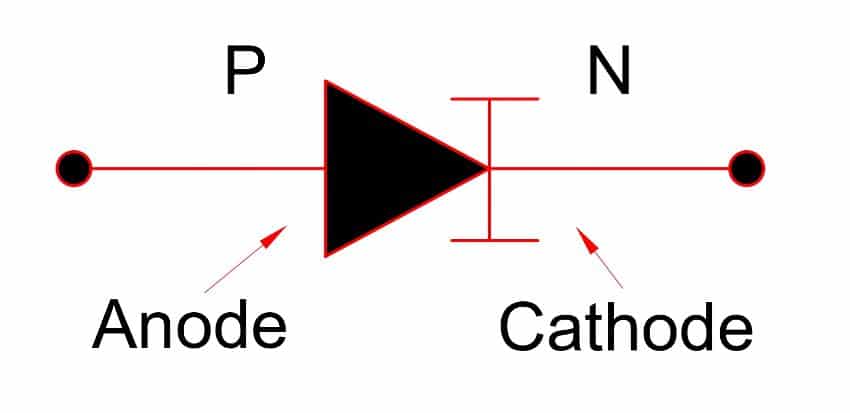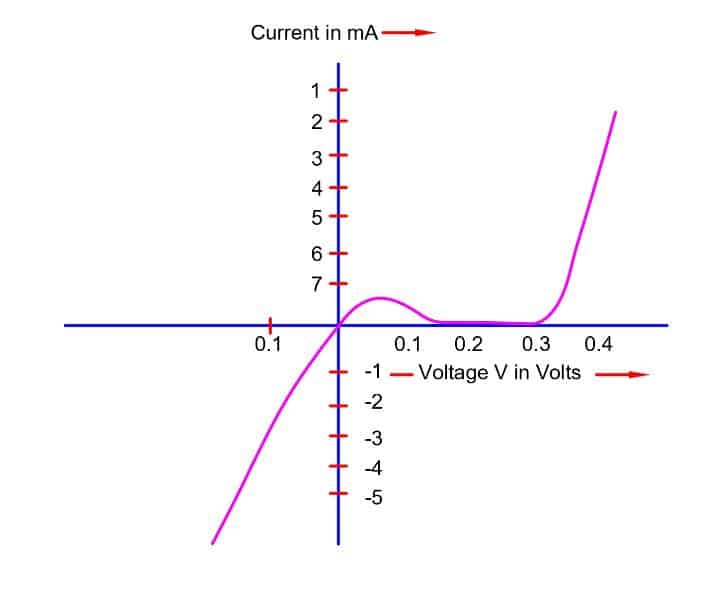What is Peak Load Current?
Peak Load Current of Backward Diode is the maximum current that flows through it. By construction, the backward diode is a variation on Zener diode or tunnel diode.
It has better conduction for small reverse bias voltage in comparison to forward bias voltages. As a result of mixed characteristics of a tunnel and Zener diode, it has better conduction at reverse voltage ranging from -0.1 to -0.6 V. We use backward diode for a specific application.
The flow of reverse current in backward diode caused by tunneling phenomenon. The forward diode operates in the reverse bias similarly the conventional diode operates in forward biasing. Importantly, the backward diode has a negative resistance characteristics very similar to a tunnel diode characteristics in the forward bias. Thus, we can say the backward diode is a combination of Zener diode and tunnel diode.
The backwards conducts has superior working in the reverse bias & providing superior high-frequency response, temperature stability, radiation hardness, and 1/f noise performance than a conventional diode conducting in the forward direction. The backward diode has low resistance in the reverse bias, and on increasing source voltage the current through it increase, however the voltage across it remains fairly constant. The peak load current of the backward diode varies with an increase of reverse voltage.
Symbol of Backward Diode

Current–voltage characteristics of backward diode
The forward I-V characteristics of the backward diode and P-N diode is the same. On application of reverse voltage the breakdown starts. The Zener breakdown is the phenomenon when the Zener diode starts conducting heavily at a particular voltage and the voltage across the Zener remains fairly constant.

However, the Backward diode has a tunneling phenomenon in the beginning and it has negative resistance. Finally, the negative resistance region disappears.
Read Next: